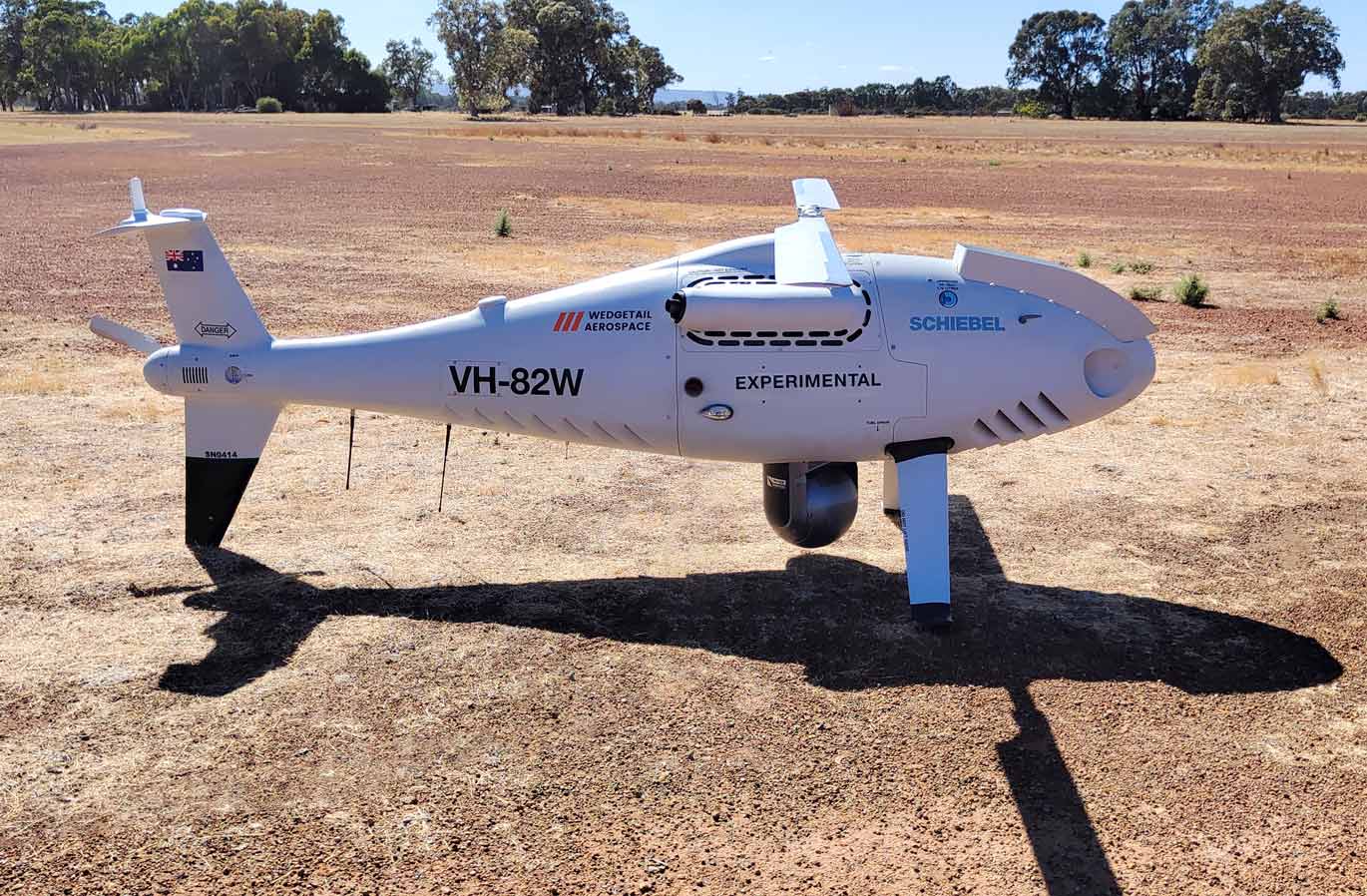Schiebel Camcopter S-100 receives approval in Australia to fly in civilian airspace
Australian Civil Aviation Safety Authority (CASA) approval for the Schiebel Camcopter S-100 opens up civilian applications for the rotary wing UAS.
15 February 2024

The Schiebel CAMCOPTER® S-100 Unmanned Air System (UAS) is the first large (>150 kg) Vertical Take-off and Landing (VTOL) UAS to attain approval from Australian authorities to operate in civilian air space.
Wedgetail Aerospace, supported by Schiebel Pacific, which is Schiebel Austria’s Australian subsidiary, successfully obtained approval from the Australian Civil Aviation Safety Authority (CASA). “This is a significant milestone for Schiebel Pacific and its Australian RPAS operations,” said Fabian Knechtl, managing director at Schiebel Pacific.
“The CASA approval enables us to offer the outstanding capabilities of the CAMCOPTER® S-100 system to the civil sector. With strong local partners, our wealth of experience in the operation of the S-100 and now with the approval of CASA, we are very well positioned for the Australian commercial market.
Approvals followed a series of flight demonstrations in Western Australia. This endorsement enables the S-100 to operate in Australian civil airspace. Possible applications now being pursued include fire and disaster monitoring, cargo delivery, as well as inspections and surveillance.
In Australia, the S-100 regularly flies under a Defence Aviation Safety Agency (DASA) UAS permit, which the Royal Australian Navy obtained back in 2017 for its S-100 operations. The Royal Australian Navy’s 822X squadron currently has six CAMCOPTER S-100 aircraft in operation in a trial capacity under its long-running Navy Minor Program (NMP)1942.
In 2022, Australia “shelved” the Royal Australian Navy’s Project SEA 129 Phase 5 Block 1 Maritime Unmanned Aircraft System (MUAS) tender process, electing to make a sole-source acquisition of the Raytheon Australia/Schiebel S-100 Camcopter.
However, according to Naval News, Australia “quietly canned” the sole-source acquisition following the election of a new Labour government in Australia and a review of its defence needs and capabilities.